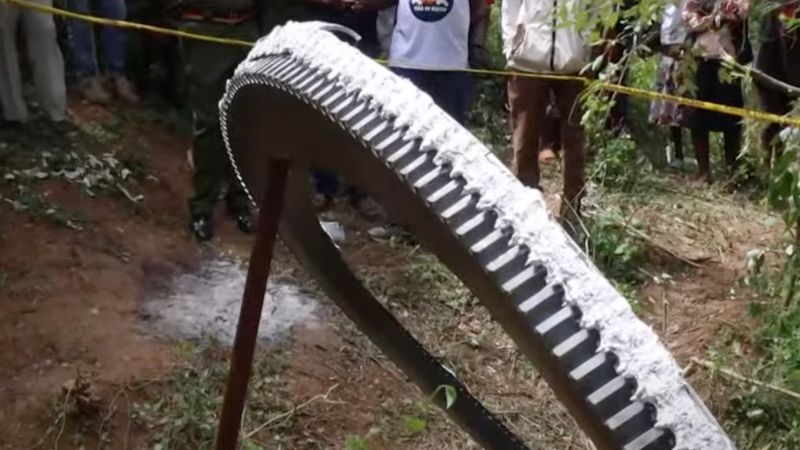On a seemingly ordinary Monday afternoon, the tranquility of a small village in Kenya was abruptly shattered when a substantial, red-hot object descended from the sky, directly into the heart of the community. Local residents, startled by the celestial event, promptly reported the incident to Kenya’s national broadcaster, which then alerted various governmental agencies, sparking an extensive investigation led by the nation’s space agency. The occurrence has since garnered national and international media attention, raising questions about space debris and the implications of objects falling from the heavens.
As the days unfolded, the Kenya Space Agency (KSA) released statements revealing that this mysterious object had been identified as a fragment of a space object. While initial panic ensued among the villagers, the KSA emphasized the need for calm and rational investigation, stating that they had assumed custody of the fallen object, which was discovered in the remote village of Mukuku, located in the southern region of Makueni County. According to expert evaluations, the object is primarily described as space junk with considerable dimensions, measuring approximately 2.5 meters (about 8 feet) in width and weighing an impressive 500 kg (around 1,100 pounds).
In clarifying the nature of the object, the KSA officials detailed that it was, in fact, a metallic ring. “The object, a metallic ring measuring approximately 2.5 meters in diameter and weighing about 500 kg, is a fragment of a space object,” the KSA’s official statement read. Drawing from preliminary assessments, the agency posited that this unusual artifact could likely be a separation ring from some type of rocket. This hypothesis was further corroborated by the acknowledgment that such space debris typically meets its demise by either descending into the ocean or burning up upon re-entry into Earth’s atmosphere.
However, the incident in Makueni County was unique, as local officials suggested that the fallen object appeared to be an isolated case. This prompted further investigations by the KSA to ascertain its origin. The phenomenon of space debris entering the Earth’s atmosphere is not a common occurrence close to populated areas, making this event even more noteworthy and eliciting heightened scrutiny from space experts and researchers worldwide.
Julius Rotich, the Mbooni Sub County Police Commander, provided a vivid account of the situation as it unfolded. He reported that police and emergency personnel arrived to find the object still emitting heat, necessitating measures to cordon off the surrounding area and ensure the safety of local residents until it cooled sufficiently. Images broadcast by the Kenya Broadcasting Corporation depicted the scene with police tape securing the area around the metallic ring, some of which had landed in trees, showcasing a juxtaposition of nature and human machinery as curious residents gathered around, drawn by the unexpected spectacle.
In its pursuit of clarity and understanding, the KSA has initiated a detailed analysis of the object, illustrating a commitment to identifying its exact origin. The incident serves not only as a peculiar local occurrence but as a reminder of the vast complexities of space exploration and the debris it produces. Investigations into such events carry considerable significance, shedding light on the need for greater international cooperation regarding space traffic management, which is increasingly pertinent as space exploration intensifies globally.
As inquiries continue, both local authorities and the KSA aim to assure the public that their safety remains paramount. Furthermore, the event emphasizes the unpredictable relationship between humanity and the cosmos, triggering discussions about the implications of space exploration, its triumphs, and its challenges. The people of Mukuku, no doubt bewildered yet fascinated by the spectacle that fell from the sky, find themselves at the center of a narrative that connects Earthly affairs with celestial phenomena, bridging science, curiosity, and community in a singular, remarkable incident.



